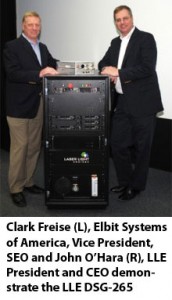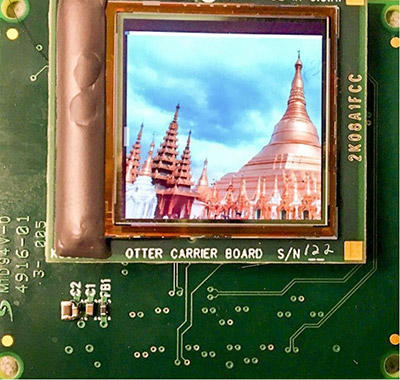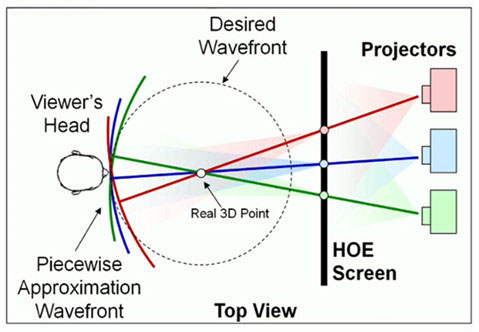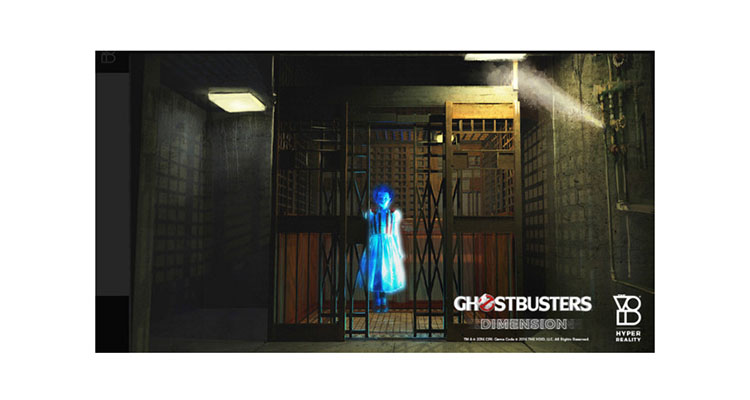First Commercial Theater to Show 3D Movie with a Laser Projector
That’s right – we heard it from none other than movie produc er Jon Landau. Starting March 28th and running for two weeks, you can see the new GI Joe: Retaliation movie at the AMC Theater’s Burbank 16 EXT Theater in 3D using a laser projector. The 65-foot screen will be powered by Christie and will achieve a 3D brightness level of 14 foot-lamberts – way above the 4-6 ft-L that most 3D movies are shown at. That brightness and the long life of the lasers are why projector makers and theater operators are so excited about this technology. Oh, and did I mention it will run on a 4K projector?
er Jon Landau. Starting March 28th and running for two weeks, you can see the new GI Joe: Retaliation movie at the AMC Theater’s Burbank 16 EXT Theater in 3D using a laser projector. The 65-foot screen will be powered by Christie and will achieve a 3D brightness level of 14 foot-lamberts – way above the 4-6 ft-L that most 3D movies are shown at. That brightness and the long life of the lasers are why projector makers and theater operators are so excited about this technology. Oh, and did I mention it will run on a 4K projector?
The development of laser for projectors has been a topic we have followed for years, but most have figured their roll out was years away. This is the first time a laser projector will show a first run movie to general audiences, so it may be here sooner than you thought.
We have also just learned that one of key developers of lasers for cinema projectors, Laser Light Engines (Salem, NH), has just penned a manufacturing agreement with Elbit Systems of America (Ft. Worth, Tex.). Elbit will now manufacture the LLE DSG-265, a high-powered, solid state de-speckled GREEN laser module.
Obviously a red and blue laser are also needed for a projection solution, but LLE says the green laser will be incorporated into a complete red/green/blue (RGB) laser illumination system that replaces traditional high pressure gas discharge lamps. This laser module is part of LLE ‘s “universal” architecture that enables plug and play with new projection systems or can be used to retrofit and upgrade tens of thousands of existing installations.
Laser projectors, high frame rate, wide dynamic range, wide color gamut, new 3D sound solutions and distributed production are among the topics that will be highlighted at the 2013 NAB Show’s Technology Summit on Cinema. This event, which runs April 6-7 in Las Vegas, is produced by SMPTE. Keynoting the event will be Jon Landau who will have an interview style discussion with Variety columnist David Cohen.
Landau and the executive staff of SMPTE hosted a pre-show webinar yesterday to profile the event. That’s when Landau told us about the laser projector screening in response to a question about the timing of such events.
We will be attending and will be very interested in a number of sessions. These include one detailing the status of digital projector and 3D roll outs on a worldwide basis as well as updates on the new 3D sound formats, like Dolby Atmos and Barco Auro 11.1.
We also learned that there will be a new tutorial from Jim Cameron providing more footage on high frame rate and 3D. I am also interested in learning the state of what SMPTE is calling distributed workflow. This means that film production and post production files can be shared, rendered and previewed using very high bandwidth networks almost anywhere in the world. This could offer some nice cost savings in travel.
There will be sessions that also discuss the impact of wide dynamic range and wide color gamut capture and processing. As Dolby’s Pat Griffiths put it, he sees the goal of cinema capture and display being to exceed what the human eye can see. “We are there now with sound, but not with visual images,” he said. He noted that many of today’s cameras are getting close to capturing and exceeding what the eye can see. Projection still lags a bit, but lasers will help a lot.
The conference will also feature talks on high frame rate capture and display and ask the question: What is the verdict? As Landau noted, and others are likely to agree, it is too early for a verdict as HFR. “HFR, 3D, new sound technologies, wider dynamic range and color gamut are all brand new tools in the hands of creators. You just don’t master these tools overnight,” noted Landau.
Adding any of these attributes to movie production requires more bandwidth, storage and processing power, however, which means more cost. Wendy Aylsworth from Warner Bros Entertainment, speculated that it might be five years before smaller budget films could start to adopt technologies like HFR. But Landau was not so sure. “We are now looking at capturing in HFR 3D, but editing at 24 fps. We would then be able to create masters at 24 and HFR.” He acknowledged that special effects at HFR will definitely be more expensive, however.
As for the take up of 3D in theaters, Landau and Aylsworth confirmed that 3D is clearly stronger outside of the U.S. for theatrical. But Landau made an interesting point. He said that digital theaters are now coming to parts of the world that never had them before so their first experience is a 3D experience, so there is a lot of novelty in many regions still.
What is particularly good about this event is the technology focus. Theaters are the cutting edge for AV entertainment and this event is put on by and for technologists. While there is much work to do, we are seeing advancements in this space by leaps and bounds, which is why we will also have a strong focus on these topics at the upcoming Projection Summit.





